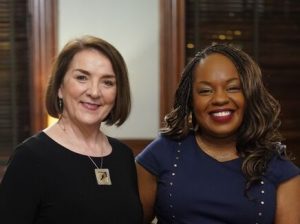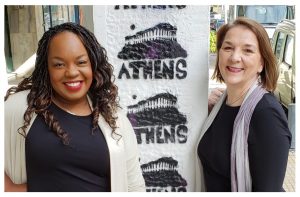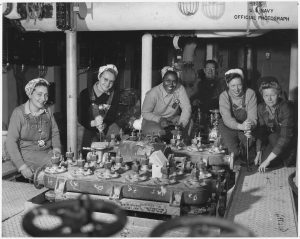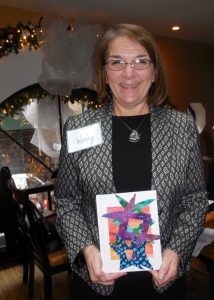Trigger Warning
This post includes references to the of abuse of a child and to attempted suicide.
Without Hope
As an abused child, there were many days when I was without hope. Without hope that tomorrow would be better than today. Without hope that anyone could save me, as those who were meant to do so were the perpetrators of that abuse—the predators whose disease fed on my existence—my parents. Without hope that anyone could possibly understand what I was experiencing as my life was the opposite of what was depicted as the ideal American life on television shows designed to project an image of wholesome righteousness during the early nineteen sixties when millions of us ‘Boomers’ were glued to our TV sets.
Without hope that someone would or could come and rescue me, I did what many hopeless people do, I attempted to end my life. I experienced a cycle of suicide attempts multiple times that ended before I turned 18. A dear friend said to me years ago, “I am grateful that the one thing that you are really bad at is suicide!” Years of incredibly competent therapy and living a life surrounded by people who love and nurture me, have kept me on a path of healing.
The current state of our world is incredibly triggering for myself and my fellow survivors. We are re-experiencing a time when predators can feast on the rest of us without constraint. When perpetrators of horrendous crimes go unpunished and unchecked. When those charged with protecting us and the greater good of upholding the law and maintaining order have a record of telling lies, perpetrating abuse, discriminating against, and bullying others. When reality is the opposite of all that we worked for, dreamed of, and thought that we overcame.
It is not that I hold any delusion of living in a post-racist, equitable, inclusive society, I would not have as many clients as I do if this were so. I did, despite my history, think that we were progressing, evolving. Alas, I forgot how predators work. I have lived with many predators other than my parents – cats and dogs, mainly. Predators can wait a really, really long time for their prey to forget that they are lurking in the shadows to pounce. When predators are sated but bored they tend to play with their food. Cats will play with wounded prey for quite a while as a means of entertainment. Think of the thriving pet toy market.
This is the same way that bullies operate. They need their targets (or victims) to respond. To cry, complain, react in some way. Hence, the expression, “Liberal tears.” Sometimes, the best way to shut down a bully is to ignore them. Going back to the anecdote about predators, the best defense for members of species that are considered prey for other species is to play dead. There are countless examples of this, the most famous being the opossum, which plays dead involuntarily. If the predator is not truly hungry they will usually not exert the energy needed to try to find out if their prey is really dead already. In terms of bullies, if they are ignored, two things may occur: first, they may become bored by playing a two person game alone. Second, their ego may take a hit as the oxygen narcissists crave is attention. If one target does not provide it, they will usually move on to another. Think of the multiple forms of adrenaline rushes available to those hooked on it.
Never Enough
My husband goes fly fishing. He has shared a story of fishing for trout that many people who fly fish have experienced. When removing the hook from the mouth of a trout, he saw that there was not just another insect already in its mouth, but several more in its throat. So many insects that the fish could not possibly even swallow them. Why did the fish go after yet another fly when it was already full? Because the fish is not thinking about tomorrow. The fish is only thinking about getting as much food as possible right now. Similarly, there are those for whom there is never enough money, power, toys, or followers.
Survival in Numbers
Watching nature programs as children we learned that those who strayed from the herd, whether babies or elders, were easy pickings for the predators. We would watch between our fingers as the lion got the poor gazelle in its sites and would wait for just the right moment to spring and end its life. I would whisper into my hand “Stay with the herd! Stay together!” This was a tactic that I learned growing up on the sidewalks of the projects and in my apartment both. I was safer when I was with a group.
I have been watching people scatter and panic and give up without even trying to survive. Sometimes on those very same nature shows, a group of animals who are typically the prey would flip the script and take down a hyena or a tiger. I have seen groups of birds—from multiple species—come together and protect their community from a red tailed hawk so effectively that I would think that they had done a few strategic planning sessions. [This is an inside joke for my clients and colleagues.]
The Moral of the Story [Another reference to strategic planning.]
Hope, strategic hope, requires that we have a vision for tomorrow, of a brighter tomorrow. When I was in my darkest hour, I would visualize those who I loved, those who would be traumatized by my death, who would mourn my absence. Those visions have motivated me to stay around for decades and still give me hope for the future. I think of all of the young people who are currently enrolled in college or attending high school or junior high school or third grade. Then, I think of that question that interviewers will often ask famous people, “What would you tell eight year old Wendy, if you could?”
“Wendy, this is temporary and you will survive. It will require you to work really hard and to talk to others who you think are doing fine (they are not) and form a club. That club needs to be inclusive and diverse and every voice needs to be heard and no matter what the predators say or do, you have to stay together.”
What Does Together Mean?
Anyone who grapples with depression knows that the worst thing for us is isolation. We cannot do this alone. We should not do this alone. We will not do this alone.
For years in my workshops I have explained the difference between diversity and inclusion this way. Diversity is a fact. We, within our species, are diverse. We come in various shades and sizes, we speak many different languages, we eat a wide range of foods, and we have an extraordinary variety of affinities and identities which, when intersected make us who we are. Inclusion requires action, continual action. First, I must invite you to join me. Then, I must treat you with value, to listen to you and learn what you need and want. Finally, I must be willing to change how I do what I do.
Survival Tactics
Back to how triggering all of this power shifting is for most of us. Some recommendations for being mindful of others’ state of being:
Do not send people links without a description. I have had multiple friends send me links in the past few weeks without telling what the link is to. I will not open them. Not only am I tired of being bombarded by scammy texts and emails and the relentless requests for donations, I am too emotionally charged these days to click on a link and see a video of someone ranting about how bad things are, or to a bunch of statistics about how bad things are, or of an image depicting how bad things are. Also, please do not send cartoons, memes, or ‘witty’ quips about those about to take control. They are not funny.
Verify everything that you read. The volume of disinformation being spread by predators will continue to exponentially increase. We must diligently verify any ‘news’ that we take in to confirm that it is the truth, the whole truth, and nothing but the truth.
Do not amplify the voices of those who are lying, gas lighting, or hate speaking. Part of how we got to this place is that those voices have been broadcast consistently and without filtering or question for years on corporate media.
Do not assume that others are alright. Ask. I have a long history of becoming quiet when I am not doing well emotionally. Those closest to me know this and check-in. They ask how I am and what I need or want. Sometimes, just their asking makes me feel better, connected, and loved.
Remember that you are not alone. The 988 Suicide & Crisis Lifeline connects you to trained crisis counselors 24/7. You can also call, text or chat 988 if you are worried about someone you care about who may need crisis support. Please remember that others need you and want you to be here.
One of the things that helped me to break out of my cycle of self-harm was helping others. When I was sixteen, I volunteered at a cancer ward for terminally ill children under thirteen. At that point, I was no longer subjected to the abuse that I endured for the majority of my childhood. I would bring my acoustic guitar and play songs like “Puff the Magic Dragon,” and “B-I-N-G-O,” to the delight of the kids who were in ward. Those children engaged in persistent joy and it was contagious! They made my heart sing. Connection with and supporting others was and is a lifeline for me.
An Invitation
I was a very imaginative child. My imagination saved me again and again. These days, I am picturing myself as a French Resistance fighter during World War II. I am wearing a black beret; I am smoking a Gauloises cigarette and cranking a ham radio. I am calling you. I hope that you can hear me and will respond, s’il vous plait.
I am cordially inviting you to join my club. Many of you are already members, but I think this is a great time to remind you how much I value you and all that you are and do to make our world a better place. I do not know what we should call this club. Perhaps, the club for people who practice resilient love, or the we have been through too much to give up now club. Whatever we call it, we need to come together and stay together and protect each other and our world.
Onward!
Wendy Amengual Wark
December 11, 2024

This golden morning view gives me incredible hope and joy and makes my heart sing with love.
Wendy@InclusionStrategy.com
Inclusion Strategy Solutions LLC









